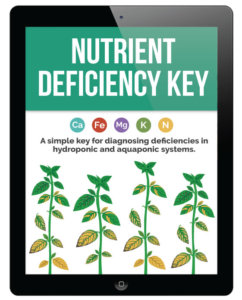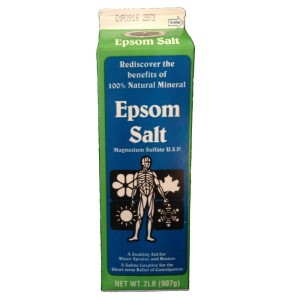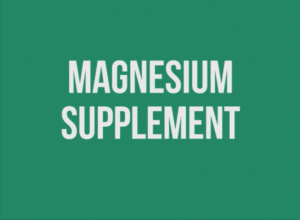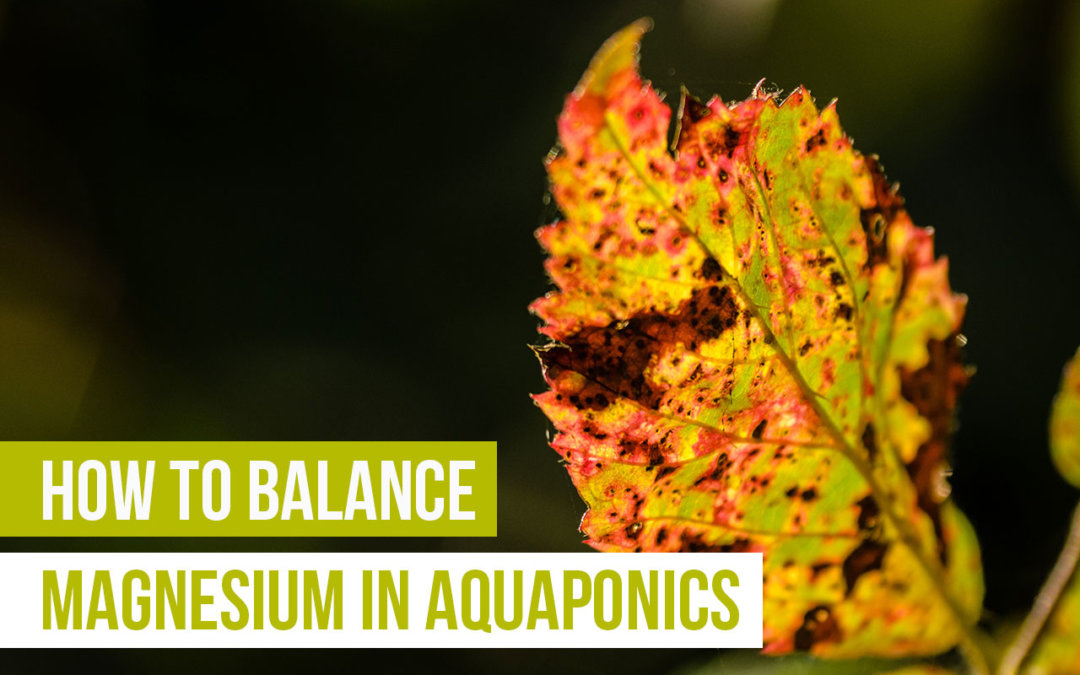The importance of magnesium in aquaponic systems
Magnesium is a core part of enzymes, proteins, and the machinery of photosynthesis. When it’s deficient, it can negatively impact the productivity of your system.
Magnesium exists in aquaponic systems as a positive ion (Mg²+) and interacts competitively with potassium (K) and calcium (Ca). Because the three are so interactive, magnesium deficiencies should be treated alongside K and Ca deficiencies. Learn to carefully examine the symptoms, and always use a nutrient deficiency key such as this one.
What does a magnesium deficiency look like?
 A magnesium deficiency is characterized primarily by interveinal chlorosis (yellowing of leaf tissue between veins) with older growth falling away. This is because young plant growth scavenges magnesium from older parts of the plant when deficient, causing those older leaves to die off. So when a magnesium deficiency develops, it shows up primarily in the older leaves.
A magnesium deficiency is characterized primarily by interveinal chlorosis (yellowing of leaf tissue between veins) with older growth falling away. This is because young plant growth scavenges magnesium from older parts of the plant when deficient, causing those older leaves to die off. So when a magnesium deficiency develops, it shows up primarily in the older leaves.
The ability to recognize the unique traits of a magnesium deficiency will help you distinguish between magnesium, potassium, and calcium deficiencies. Remember that potassium is the most commonly deficient nutrient, but calcium and magnesium follow closely behind. They occur together so commonly that they are often tricky to distinguish, and are even interrelated.
The physical traits that indicate the deficiencies of these three nutrients are remarkably similar.
For example:
Chlorosis is a key symptom of magnesium deficiency. This is because magnesium is integral to photosynthesis. When the plant doesn’t have magnesium, chloroplasts break down and chlorophyll is lost. Chlorophyll is the dominant green pigment in plant leaves, and in its absence, the yellow pigment underneath the chlorophyll show instead. Therefore, when you see yellow, the plant could have a magnesium deficiency.
A potassium deficiency also causes interveinal chlorosis, and for a notably similar reason. Thus, we highly recommend that you use the deficiency key in order to correctly diagnose and supplement.
Keep your eye out for other deficiency indicators; some plants with a magnesium deficiency will show burning along the fringes of the leaves, bronze or brown spots, and occasional cupping. Most of the time, though, interveinal chlorosis in addition to the loss of older growth will be the prominent symptoms.
If you do think you have a magnesium deficiency, there are a few ways you can treat it.
Treating magnesium deficiencies
There are several ways to treat magnesium deficiencies depending on the pH level of your system. If you are running a system that has a low pH, you’ll want to use hydrated (or agricultural) lime.
This is a mixture of calcium and magnesium hydroxides. Depending on the lime you get, it will have more or less magnesium. Keep in mind that the interactions between calcium, potassium, and magnesium are complex and when one is off balance, things within your system can get funky.
Use a combination of agricultural lime and potassium hydroxide to condition your pH. The mixture will raise pH in addition to keeping all three nutrients balanced in your system.
In neutral pH systems—when it’s not always necessary to raise the pH level—we typically recommend weekly doses of soluble kelp concentrate powder to supplement potassium, in addition to a mixture of chelated calcium and magnesium sulfate. This is known as CalMag and can be used for plants that use a lot of calcium like tomatoes, or peppers. It is an expensive mixture, however, and a more economical option is to balance magnesium with Epsom salt.
Supplementing with Epsom salt
 A naturally occurring mineral, Epsom salt—or magnesium sulfate (MgSO₄)—has been used for a variety of purposes including digestive health and treating infections. In fact, Epsom salt can positively impact the health of your fish.
A naturally occurring mineral, Epsom salt—or magnesium sulfate (MgSO₄)—has been used for a variety of purposes including digestive health and treating infections. In fact, Epsom salt can positively impact the health of your fish.
The white granular salt (edible but not palatable) is easily dissolved in water, and fortunately for aquaponic growers, it is harmless to fish in the correct dosage. Some people even add Epsom salt to their aquariums purposefully to treat infections. Its usefulness extends into hydroponics and aquaponics as well, as it is a safe and quick way to supplement magnesium.
If you’re using hydrated lime with high magnesium content, (i.e. hydrated lime made with dolomitic lime) you probably won’t need to supplement magnesium.
Note: Don’t use dolomitic lime—it’s not as soluble and contains carbonates. Use the hydrated lime, which is a soluble powder.
For most systems, however, especially those with high nutrient consumption, magnesium is a common deficiency. You can buy magnesium sulfate at any aquaponics store, but unless you are using huge amounts, it will be much cheaper to buy a pound or two at your local dollar store. (Make sure that it doesn’t have added scents before purchasing.)
Adding Epsom salt
When adding Epsom salt to your system, you’ll want to add a dry ounce for every 1000–1500 gallons. This comes to about a tablespoon for a regular sized IBC (intermediate bulk container).
In hydroponics, add the salt to the sump tank.
For an aquaponic system, the salt can be added to the fish tank.
In either system, adjust amounts if new growth continues to show symptoms of the deficiency. If no longer deficient, new growth will improve immediately but any growth that has been damaged by the deficiency (chlorosis, necrosis, etc.) will not recover. After a while, you will work out a schedule for adding Epsom Salt.
What about the sulfate in MgSO₄?
Maybe you saw the name “magnesium sulfate” and thought, “Oh! It must treat sulfur deficiencies as well!” Well, you are correct. Sort of.
Sulfur is seldom deficient, but if you are putting magnesium sulfate into your system on a regular basis, you will rule out sulfur deficiencies almost completely. This makes Epsom salt a triple benefit to your system; its main function is a magnesium supplement, but it also supports fish health and discourages sulfur deficiencies.
Why wouldn’t you use Epsom salt?
Get up to speed on the other nutrients in aquaponics articles:
- Everything You Need to Know About Nitrogen in Aquaponics
- Beginner’s Guide to Iron in Aquaponics
- 6 Things You Need to Know About Potassium in Aquaponics
- The Most Important Things to Know About Phosphorus in Aquaponics



i have one IBC Tank (1000 Liter) Fish Tank, How many Amount Epsom Salt i have to add in my system ??